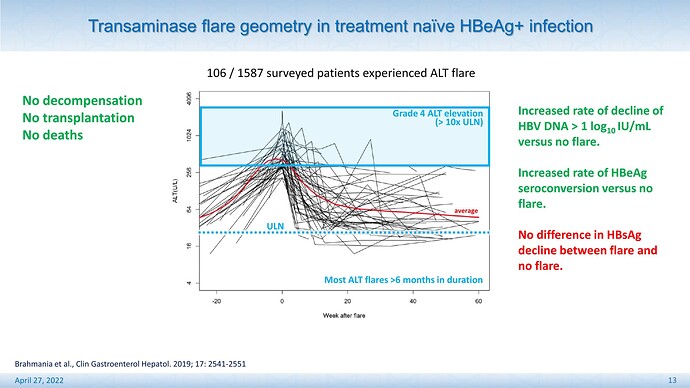Hi John,
The critical part of sterilizing cure is the removal of all cccDNA in the liver (whether active or latent) so that production of virus can no longer occur. Removal of integrated HBV DNA is also part of the definition of sterilizing cure but is it not the critical feature of this definition since integrated HBV DNA is not capable of producing virus. Of course the challenges with latent cccDNA being a non-drug-able form of cccDNA persisting for a very long time in the liver make sterilizing cure very unlikely to achieve.
The coining of the term “functional cure” is several years old now and in the interim, we now know that the integration of HBV DNA is an event which occurs soon after infection and progressively increases with the duration of infection. We also know that integrated HBV DNA cannot be targeted by any direct acting antiviral and cannot be silenced by the immune mechanisms which can inactivate cccDNA. Importantly, integrated HBV DNA is fully capable of producing HBsAg in the form of HBV subviral particles. As such integrated HBV DNA is a source of a significant proportion of HBsAg and in HBeAg negative infection, provides the bulk of HBsAg.
You are quite correct that the original definition of functional cure did not mention integrated HBV DNA, but we now know that the persistent HBsAg loss in the absence of treatment (which is an important part of functional cure) cannot exist while integrated HBV DNA is present.
Functional cure of HBV infection is highly correlated not only with HBsAg loss during therapy but also with transaminase flares (which signal the removal of infected cells with cccDNA or integrated HBV DNA). Functional cure with approved agents (NUCs and pegIFN) are always associated with transaminase flares during therapy, with stronger flares correlated with higher rates of HBsAg loss and functional cure.
The reality of HBsAg loss (and functional cure) requiring removal of integrated HBV DNA and transaminase flares which signal this event were recently acknowledged at the 2022 AASLD-EASL Endpoints meeting.
All the best…

